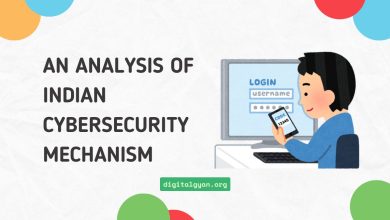How to Detect 7 Online Fakes Used by Scammers
In the digital age, scammers and fraudsters have found new and sophisticated ways to deceive people online.
From fake social media profiles to fraudulent online marketplaces, these online fakes can be difficult to detect, even for the most tech-savvy users.
With the rise of online transactions and virtual interactions, identifying and avoiding these online fakes is more important than ever. In this blog post, we’ll explore seven common online fakes used by scammers and provide you with tips on how to spot them.
By learning these techniques, you can better protect yourself from online scams and ensure a safer and more secure online experience.
1. Download Buttons
Through Google’s AdSense adverts, thieves consistently succeed in spreading phoney download links around the Internet. Even worse, they regularly appear in locations where legitimate downloads are offered. You will download ineffective or malicious software if you choose the wrong one. Fortunately, there are a few straightforward methods for determining whether a download button is fraudulent.
The file is not authentic if there is an advertisement next to the download button. Another indicator is the blue triangle AdChoices logo in the advertisement’s corner. It is an advertisement if clicking and dragging a download button causes the image to alter in response to mouse movement. You may finally hover over a link to view its destination. In the bottom-left corner of the majority of web browsers, the destination can be found. A legitimate download link will identify the software or website that is downloaded. If the URL begins with googleads or a similar string, it is advertising.
If you only download software from reputable sources, you can dramatically reduce your risk of clicking on a false download button.
2. Emails
Visible spam emails are easy to spot. However, what about phishing emails that want to steal your personal information or trick you into downloading malware? Often, these look like real emails from your friends or trusted entities like your bank.
Keep a few principles in mind when determining if an email is real or not.
To begin, verify the sender’s identity. Despite the fact that spoofing a message and making it appear to originate from a reputable email address is feasible, most phoney emails are sent from a false address. If you’ve received official communications from a @paypal.com address and this one comes from @paypalservicealerts.com, there’s a problem with your account. Emails that appear to be from your contacts are likewise affected.
Consider the message’s content while determining if it’s authentic. Legitimate businesses will never contact you for your credit card number, social security number, or password. To terrify you into clicking, phishing emails are typically intended to provide fraudulent receipts for expensive subscriptions, such as the App Store scam. Hovering over a link in an email will show you where it takes you, just like checking download buttons. An official email should direct the recipient to an official site. Don’t click on a link with an unusual domain name.
Go to the website directly if you’re unsure about an email you’ve received. When you log in to PayPal, you will be notified if more information is required from you.
Also Read: How to decide if the Amazon review is fake?
3. Update Notifications
Some apps update automatically, but others prompt you to apply updates manually. Because you probably are not expecting to see these, ads disguised as update prompts are a famous fake. It happened recently with a variety of fake sites offering “urgent updates” for Firefox.
If you see a pop-up or notification anywhere online telling you to install a “recommended” update for Java, Flash, or other plugins, do not click it. Programs do not use random pop-ups from a website to tell you about updates. Prompts that appear to update the software when you first boot your computer is almost always safe unless you have adware installed.
Like phishing emails, you should always open the software in question when in doubt and check for updates manually. Nearly all apps have their update checker under Help > Check for Updates or similar.
4. Online Marketplace Scams
Internet marketplaces are favoured targets for con artists because they offer a venue for shady transactions. One frequent strategy is to advertise fake goods or offer products at absurdly low costs. Check the seller’s reviews and ratings, seek for clues that the business is authentic (such a physical address and customer service phone number), and be careful of offers that seem too good to be true to spot frauds on online marketplaces.
Check this out: How Travel and Hotel Booking Apps Scam People in India
5. Charity Scams
Online frauds posing as charitable donations are becoming increasingly common. Scammers can take advantage of well-meaning people more easily since more people are contributing money online. Many different types of fraudulent crowdfunding campaigns and bogus donation websites exist.
Charity scammers frequently use social media profiles that falsely represent reputable organizations or individuals. They may make up an account or use one that seems to belong to a legitimate nonprofit. When they get enough people on their side, they’ll ask for money or information that can be exploited to steal identities. Donations should only be made through official channels, such as the organisations’ official websites and social media pages.
Scammers also take advantage of people’s goodwill by capitalizing on tragic events like natural disasters or mass killings.
6. People
Nobody online is who they seem to be. Your online “perfect guy” may be a loser. Posing as a government official may also be a foreign fraudster. Be aware of fake profiles on social media, particularly on Facebook. People’s profile photographs are frequently stolen. Their friends will be approached for money or links to scam sites.
Avoid embarrassing situations by calling your buddies. Ignore a friend’s friend request. Otherwise, be wary of internet strangers. Don’t take things at face value. Typically, the truth is revealed within five minutes.
7. Pictures
As a result of Photoshop and people’s eagerness to share everything, hoax photographs have been quite popular for some time. With today’s more capable image-altering tools, it might be difficult to distinguish between actual and modified images. Frequently, photos of text circulate on social media alleging that Facebook will soon begin charging for its services. Unless you are a Photoshop expert or the image contains a glaring error, you will be incapable of detecting alteration. Utilise a programme such as FotoForensics to analyse an image for you. You may learn a lot more about someone by doing a reverse image search on Google. This is an effective method. When you do a search for a picture, and it throws up numerous articles about a hoax, you can be sure that the image is not real. Our advice on recognising and avoiding false news during times of emergency will be useful in this situation.
Avoiding Online Fakes and Scams
Now you are aware of seven common online content falsifications. It is not always simple to distinguish between legitimate and phoney websites, emails, and images. Using these techniques can make it easier to detect lies. The remainder is acquired through practice. Otherwise, exercise caution while interacting online with strangers. Please do not accept things as they appear. Typically, the truth is revealed in less than five minutes.

